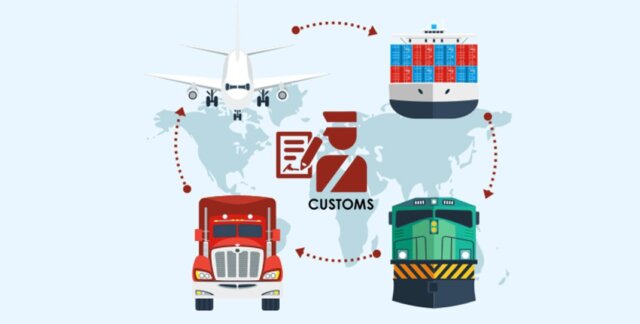
The customs clearance process can be complex and time-consuming, especially for international shipments. It involves various steps that must be followed to ensure the smooth movement of goods across borders. If you’re planning to make an international shipment, it’s essential to understand the customs process and the steps involved in clearing customs. In this article, we’ll explain the steps to follow during the customs clearance process, based on information from [1], [2], and [3].
The first step in the customs clearance process is to prepare well for the shipment. You need to gather all the customs information for the product and country you’re shipping to. This applies to both exports and free samples. According to [3], there are many possibilities, such as duty rates, product restrictions, and required documentation. Therefore, it’s crucial to gather all the information beforehand to avoid delays in the clearance process.
Regulations governing customs clearance can vary depending on the country of origin, destination, and type of goods being shipped. For example, some countries have strict regulations on the import of certain products like agricultural or medical products. Therefore, it’s important to research and understand the regulations and requirements of both the origin and destination countries.
According to [1], one of the critical documents required for customs clearance is the customs paperwork. The documents must be accurate and complete, specifically the shipping label and commercial invoice. Make sure to provide accurate and complete information on the customs paperwork, as any mistakes or omissions can lead to clearance delays.
After your shipment arrives at customs, the customs officer will examine your customs paperwork and perform a goods inspection. The inspection is to ensure that the goods being shipped comply with the customs regulations and do not pose any security risks. If the goods are found to be in compliance, the shipment will be cleared for further movement.
The customs officer will also determine the value of the goods being shipped to assess the appropriate duties and taxes. According to [2], some goods may require further documentation to determine their value, such as the cost of production or royalties paid. Therefore, it’s crucial to provide accurate and complete information about the goods being shipped.
The officer checks value and regulations to assign duties and taxes for shipping. Some goods may be exempt from duties and taxes, depending on their type and purpose. Make sure to research the duty rates and tax requirements of the destination country before shipping to avoid any unexpected fees.
After the customs officer determines the duties and taxes on the shipment, you’ll need to pay these fees to clear the shipment. The payment process can vary depending on the destination country and the mode of transport used for shipping. Some common payment methods include bank transfer, credit card, or cash.
According to [2], some countries have an electronic payment system that allows you to pay duties and taxes online. This system can be faster and more efficient than traditional payment methods, as it eliminates the need for physical cash or checks.
Freight forwarders and customs brokers can also assist with the payment of duties and taxes on your behalf. These professionals have experience in the customs clearance process and can help ensure that your shipment is cleared quickly and efficiently.
Once you’ve paid the duties and taxes on your shipment, the customs officer will release it for further movement. The shipment will then be delivered to its final destination, either by land, air, or sea.
The transit time for your shipment can vary depending on the mode of transport used and the distance to the final destination. According to [1], international shipments can take anywhere from a few days to several weeks to reach their final destination.
Delays in the customs clearance process can occur due to various reasons, such as missing or inaccurate paperwork, restricted or prohibited goods, or security concerns. Therefore, it’s essential to prepare well and ensure that all necessary documents are complete and accurate to avoid any unnecessary delays.
A: The critical documents required for customs clearance include the customs paperwork, shipping label, and commercial invoice. Some countries may also require additional documentation, such as permits or licenses.
A: Common reasons for customs clearance delays include missing or inaccurate paperwork, restricted or prohibited goods, or security concerns.
A: Yes, freight forwarders and customs brokers can assist with the customs clearance process, including the preparation of necessary documents and payment of duties and taxes.
In conclusion, customs clearance is vital for smooth cross-border movement, despite its complexity. By following the steps outlined in this article and preparing well, you can avoid unnecessary delays and ensure that your shipment is cleared quickly and efficiently. Remember to gather all the necessary information, provide accurate and complete documentation, and pay the appropriate duties and taxes on time to avoid any delays in the customs clearance process.